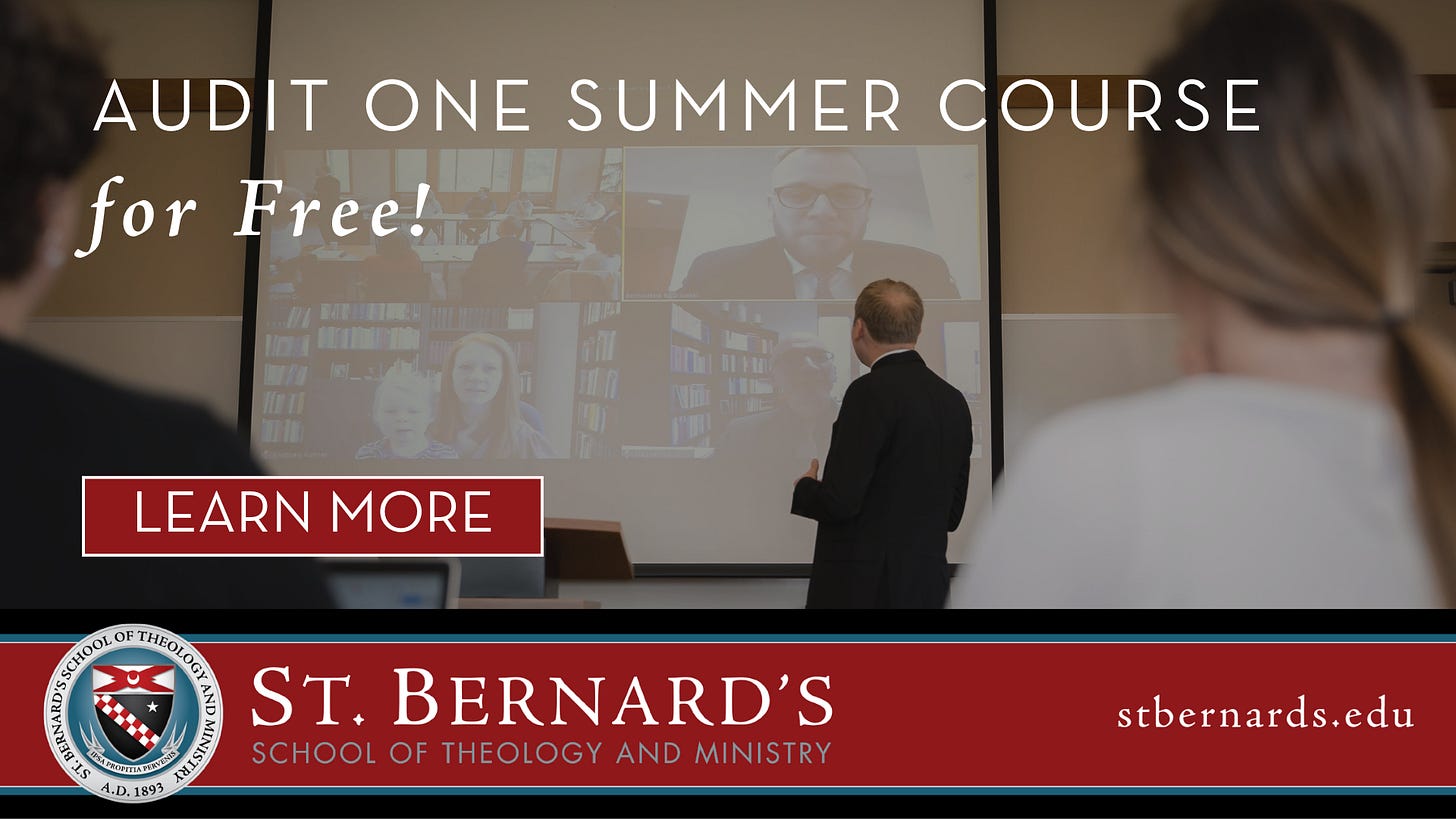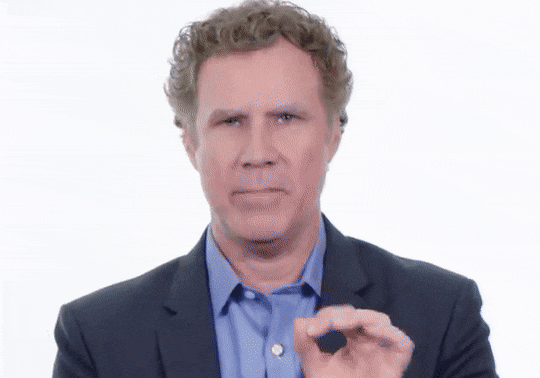Something in the air, the spirit of synodality, and accidental progress
The Friday Pillar Post
Pillar subscribers can listen to Ed read this Pillar Post here: The Pillar TL;DR
Happy Friday friends,
We are almost into Holy Week now, and you can tell here in Washington — the cherry blossoms hit peak bloom and, right on schedule, the wind changed, the rains came, and the temperature dropped by nearly 30 degrees (Celcius, obviously, that’s probably an 200 degree swing in Fahrenheit or something).
I haven’t been keeping exact records of the more than 10 years we’ve lived in and around the city, but it certainly feels like there’s a cold snap every year for Palm Sunday. It’s pretty murderous on the fleeting blossoms of the trees, of course, which only bloom for a heartbeat anyway.
But a slightly sad snowfall of rained on petals is, to my mind, a kind of wonderfully fitting and complicated backdrop for a Palm Sunday procession.
The riot of pink and white and red certainly a proper expression of joy and celebration, an echo of the crowds which welcomed the Lord into Jerusalem. But the melancholic weather — there’s rain forecast — mutes the affair. Suitably so, given how the week progresses.
Liturgy is a lot of things, and we’re supposed to enter into it fully. As mystery, as history, as immediate moment of ineffable power, and as rightly order dialogue with God.
We think and talk a lot about “full, active” participation in liturgical acts, and we can sometimes fall into the trap of focusing on external postures and actions, arguing over who is kneeling or standing when, and facing what direction, and on our intellectual engagement — how well are we struggling to comprehend what is taking place, here?
But, while it is by no means of primary importance, liturgy and liturgical participation must have an emotional component, too. We aren’t a faith of feelings, to be sure. But encountering the God who is love must surely provoke an emotional response. And seeking to accompany Christ during Holy Week can be, should be, an emotional endeavor.
If we cannot recognize our confused desires for a savior, we cannot place ourselves properly in the midst of the fickle crowd. If we cannot weep for our sins, how can we venerate the cross? And if we live all these acts unilluminated by the certain hope of the resurrection, in what is our faith placed?
It’s a complicated color palette with which to paint our prayers, and it can defy, at times, our ability to express it intellectually or act it fully. But Holy Week invites, I think, that complexity, and embraces it with and for us. Sometimes the best I can do with it all is to feel it, as fully as I can.
Here’s the news.
Thanks to the generosity of the Knights of Columbus, St. Bernard’s School of Theology and Ministry invites anyone anywhere to audit one summer course entirely free (a $375 value). Learn more about topics such as St. Thomas Aquinas’ Summa Theologiae, Introduction to Biblical Studies, 20th Century Holiness, and more. Application deadline for Summer Session I is April 25th. Learn more here!
The News
The U.S. Commission on International Religious Freedom recently voiced concern about a new Ukrainian law regulating religious organizations with ties to foreign powers.
But the Ukrainian Catholic leadership has pushed back, saying they’ve monitored the situation carefully and believe the law is needed to combat a dangerous ideology in Ukraine.
The law primarily targets the Russian Orthodox Church — ROC — and its associated Russky mir ideology, which has served as an ideological justification for Russia’s full-scale invasion of Ukraine, which began in February 2022.
But the legislation also affects the Ukrainian Orthodox Church, considered by the ROC’s Moscow Patriarchate to be its self-governing arm in Ukraine.
A recent USCIRF report concluded that the law, passed last year, places “disproportionate restrictions on the freedom to manifest one’s religion or belief.”
But senior Catholics in the country told The Pillar that the law is about fighting the Russky mir ideology, not clamping down on free religious practice. And for that it is badly needed, they told us.
This is a nuanced and obviously complicated issue, and it goes to the heart of how ideology and religious identity can and do inform whole peoples in time of war.
—
The Vatican’s financial watchdog published its annual report April 9, boasting a drop in reports of suspicious financial activity and a consistent number of referrals to prosecutors.
Though, given the only actual financial institution under its direct oversight is the IOR — probably the best run, most profitable, and most credible institution in Vatican City — I am not sure how much credit for this should go to ASIF.
What was interesting to me, reading through the full report, was the significant year-on-year increases in cash being brought into Vatican City.
This seems to me to be an obvious response to the pope’s years-long demand that all curial departments move all their money into the IOR, both for auditing purposes and to stave off a liquidity crisis.
That it’s taking so long to happen says something as significant as the need for it to happen, I think.
—
Nicaraguan police are now requiring priests to present themselves weekly at police stations for questioning and to submit their weekly homilies and list of activities for review, according to a new report.
The crackdown follows a previous statement by the Nicaraguan government which raised the prospect that the Ortega regime could stop recognizing new episcopal appointments made by the Vatican.
Edgar Beltran reported on the situation of a Church very much in the grip of oppression.
—
Cardinal Juan Cipriani has not been found guilty in any canonical procedure, and has the right to assert his innocence, the bishops conference of Peru have conceded.
The statement from the conference this week is the latest in a back and forth between them and the former Archbishop of Lima, who recently demanded a retraction from the conference over a previous statement.
It’s a complicated case that has started to feel like it is going in circles. But as it does, it illustrates exactly what happens when the Church receives allegations against a cardinal (or any bishop, come to that) and then basically tries to park the whole affair and not resolve the case.
—
After the USCCB announced this week it will not renew some refugee service agreements with the federal government, a conference official told The Pillar that government policy shifts have had a “devastating impact” on refugees.
And, while two-thirds of refugee and migration services employees at the USCCB have already been laid off this year, there will be more staffing changes in the migration office.
The cancelled programs, Bill Canny, executive director of the USCCB’s Department of Migration and Refugee Services, told us include things like assistance to unaccompanied migrant minors.
As you can imagine, any disruption to cases like theirs could have real human costs. Canny walked us through the risks, but also what the conference is doing to minimize them.
—
In the years following the Second Vatican Council, the Netherlands experienced more upheaval than just about any country in the world.
The country’s bishops relinquished oversight of Catholic education, shut down all seminaries, and agreed to take part in a controversial national “pastoral council,” a body meant to consider and help implement Vatican Council II, but which proposed sweeping changes to priestly celibacy, Catholic sexual ethics, and the liturgy.
The results were dire. Bishop Jan Hendriks of Haarlem-Amsterdam saw them first hand, and he’s seen too how people blame the council for the Church’s decline in the country.
But, in his view, Hendriks said, the issue wasn’t the council — it was a desire on the part of a small cadre of Church leaders to push beyond Vatican II for changes they’d hoped to see in the Church.
This is a great conversation. Don’t miss it.
—
As you all know by now, we launched our new Pillar Columns section this week, and we’ve tried to start off with pieces that give a flavor of what we want it to be: a home for great Catholic conversation.
To me, that means interesting people talking about interesting things. Lots of different people and lots of different things, some serious, some fun, some totally unexpected.
I don’t want it to be only ever be about one thing, because when all the conversation is only ever about one thing, that’s a party I’m leave early — by the fire escape if necessary.
Earlier this week Daniel Lipinski wrote about his time in Congress and our new politics as religious fundamentalism.
Then we had Aaron Dominguez, particle physicist, member of the National Science Board, and Catholic University provost, walking us through the concept and nature of time and what it tells us about the ordered nature of creation itself.
And he did it by using a watch as an example.
And we followed that with Stephen White, long-time friend of The Pillar, EPPC fellow and director of The Catholic Project, writing about the nature of gratitude in an age of change and institutional decline.
We made the decision to start a columns section because we thought it could bring smart, faithful, interesting people together to start smart, faithful, interesting conversations. And I’m as enthusiastic to see that happening in the comments as I am about the column themselves.
This is what we were hoping to see happen. Don’t miss out.
Thanks to the generosity of the Knights of Columbus, St. Bernard’s School of Theology and Ministry invites anyone anywhere to audit one summer course entirely free (a $375 value). Learn more about topics such as St. Thomas Aquinas’ Summa Theologiae, Introduction to Biblical Studies, 20th Century Holiness, and more. Application deadline for Summer Session I is April 25th. Learn more here!
The spirit of synodality
I was fascinated by the interview with Bishop Hendriks, which I urge you to read in full, if you haven’t already.
It wasn’t just his clear-eyed presentation of what went wrong in his country following Vatican II that struck me, so much as his honesty about the motives of some of those involved — which seemed to verge on deliberate sabotage.
Of the famous theologian Edward Schillebeeckx he had this to say: “He was a bit disappointed about the result of the council. He said at the time that it didn’t go ‘all the way,’ that it was a ‘compromise’ council… I suppose he felt this way because they did not accept most of his ideas.” So he went about trying to remake the council and the Church in his own image through a national “pastoral council.”
If it sounds familiar to you, it ought to. The bishop said “it was very much the same spirit and it brought a similar effect,” to some recent expressions of synodality in places like Germany.
The main fruit, as he put it, is polarization.
This kind of frank analysis about our history and the council, and our current synodal moment is important — and it is important that it comes from bishops like Hendriks, who have both had to clean up after this legacy of discontent and are watching it happen again in real time.
The synodal process is not, as some have predicted, and maybe even hoped, just going to vanish like mist at dawn when the next pontificate begins, whenever that may be. We need to understand that, and we need to understand what happens next.
There is nothing inherently bad or wrong about the Church wanting to root itself in synodal experiences, any more than there is something sinister in holding an ecumenical council.
But here’s the real conflict over the synod, and why we need to be ready for it:




